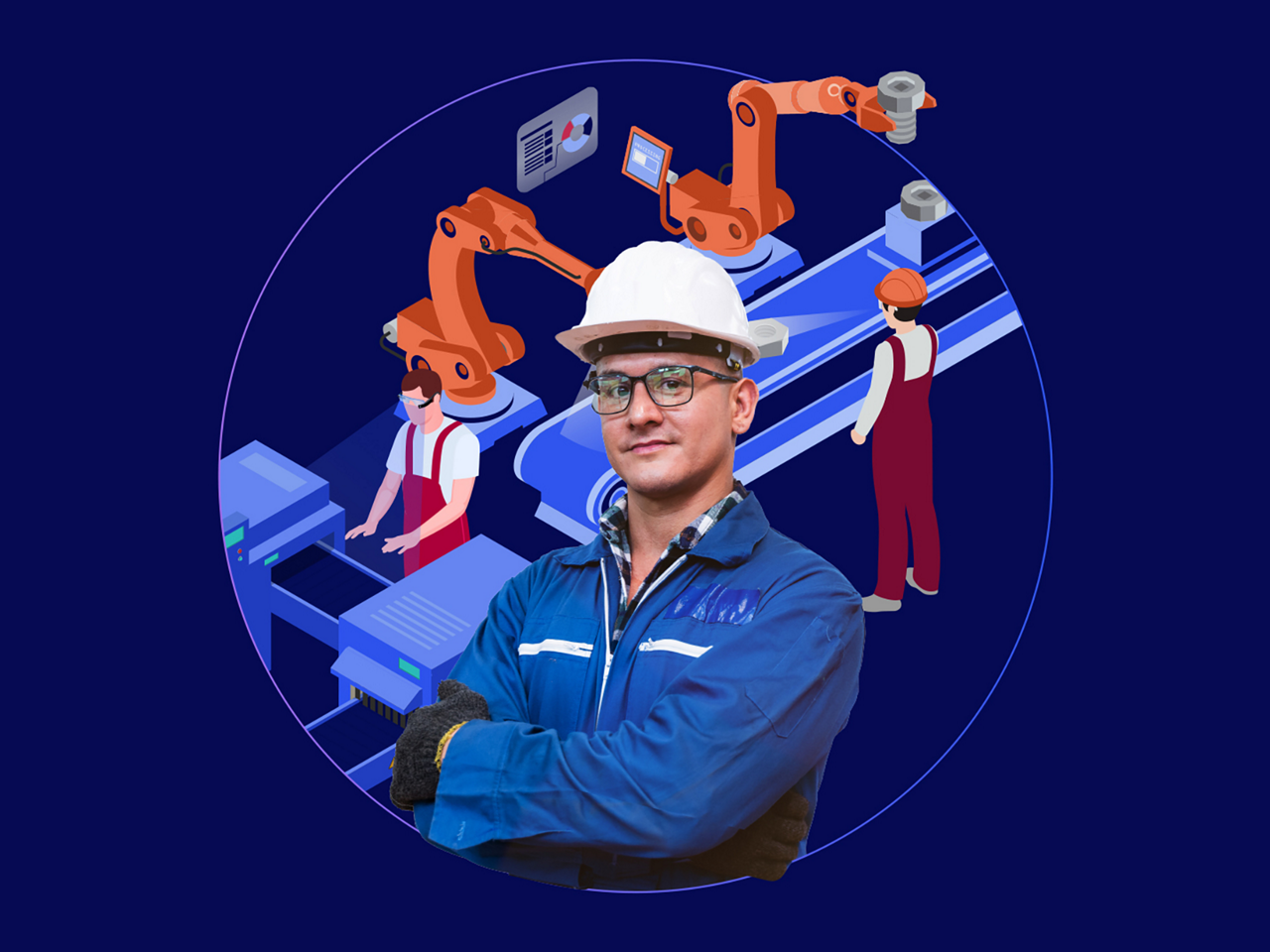How companies around the world are reducing manufacturing costs


In this article, we explore some of the ways you and your organization can reduce manufacturing costs and improve profitability and TeamViewer’s role in that.
Manufacturing costs can be divided into three main categories: direct labor, direct materials, and manufacturing overheads. Each of these can be optimized by applying various strategies and techniques.
Discover how to reduce manufacturing costs in the different parts of your business:
Direct labor costs are the wages and benefits paid to those employees engaged in the actual production process. It is important to pay fair and competitive wages to retain and motivate staff. So, as a responsible employer, you probably don’t want to review wages and hours with a view to cutting them. However, you could consider options to ensure you are getting the most from your employees; for example, by improving scheduling, optimizing deployment, and reducing idle time.
You can improve employee efficiency further by offering comprehensive training and support, including on-the-job learning. You can also support your employees to be more efficient and effective by introducing technology that simplifies tasks, such as inventory management and quality control, and facilitates feedback or support requests. All these measures can help optimize staff utilization, thereby increasing productivity without increasing costs.
Direct material costs are the costs of raw materials, components, and supplies used in the production process. Of course, suppliers are often willing to offer discounts or preferential terms for bulk orders. However, buying substantial amounts of material in advance increases both storage and inventory costs, as well as the risk of spoilage or obsolescence. So instead, you can lower direct material costs by closely collaborating with your suppliers to focus on reducing material defects and streamlining the supply chain.
The process of reducing manufacturing costs starts at the factory gate. By introducing robust control systems in the warehouse, you can ensure materials and parts are inspected for quality and reliability when they first arrive. Checking components at an early stage avoids reworking and extra costs later on down the production line.
What’s more, you can explore opportunities to introduce JIT (Just-In-Time) or JIS (Just-In-Sequence) deliveries to reduce the costs of inventory and storage. However, such arrangements need a dependable, long-term supplier and precise forward planning. But remember, regular communication and exchange of data is essential to ensure the success of JIT and JIS deliveries.
Manufacturing overheads are the indirect costs of production that are not clearly related to labor or materials. These include rent, utilities, and maintenance. So what can be done to reduce this type of manufacturing cost?
One of the major costs centers for businesses in all sectors is energy costs. You can lower your business’ consumption of electricity and fossil fuels by installing energy-efficient equipment or investing in renewable energy solutions. These not only help lower your utility bills but also reduce your company’s carbon footprint. But you should also remember, solutions to lower energy costs represent a significant investment and could lead to disruption.
However, reducing the manufacturing costs caused by one type of overhead, maintenance, is relatively easy. We all know, maintenance is essential for keeping your equipment working well and in good condition. Introducing regular preventive maintenance means more equipment uptime and therefore less disruption to production schedules.
Industrial augmented reality (AR) solutions have many potential applications in the manufacturing sector, such as enhancing worker training, increasing operational efficiency, and reducing costs.
Here are six ways industrial AR solutions can help reduce costs in manufacturing:
TeamViewer Frontline is an industrial augmented reality platform whose solutions can help reduce manufacturing costs by improving the efficiency, quality, and speed of each stage of production.
So how can TeamViewer Frontline help you reduce production costs?
As an inspect-by-vision AR tool, Frontline Inspect simplifies inspections and reduces the time and cost of maintenance. Maintenance technicians can work hands-free with diagnostics, relevant documentation, and troubleshooting guides appearing automatically in their field of view.
Frontline Assist is a see-what-I-see AR that streamlines technical support. When on site technicians can solve problems faster thanks to live advice from one or several remote experts via their smart glasses or mobile devices. As a result, operational downtimes are shorter, resources are utilized to the full, and travel expenses reduced.
By using these industrial AR solutions, TeamViewer's Frontline suite helps you digitalize and optimize work processes, resulting in lower costs, and higher quality.
Augmented reality technology reduces manufacturing costs by providing real-time information and guidance to employees, improving their efficiency, accuracy, and productivity. AR also reduces errors, risks, and costs associated with traditional processes.
Yes! Implementing AI, machine learning and other digital technologies such as TeamViewer Frontline reduces manufacturing costs in most sectors. A holistic approach to digitalization and Industry 4.0 involves connecting systems, machines, humans and data and sees impressive results. According to a recent McKinsey report, companies can achieve a reduction in machine time by 50%, a 30% increase in throughput and 30% improvement in labor productivity.
Reducing costs and maintaining quality are not mutually exclusive. Optimizing production processes with digital technologies such as augmented reality actually increases productivity while reducing defects, errors and waste. With platforms such as TeamViewer Frontline, companies leverage the data and analytics gathered to improve consistency in real time.